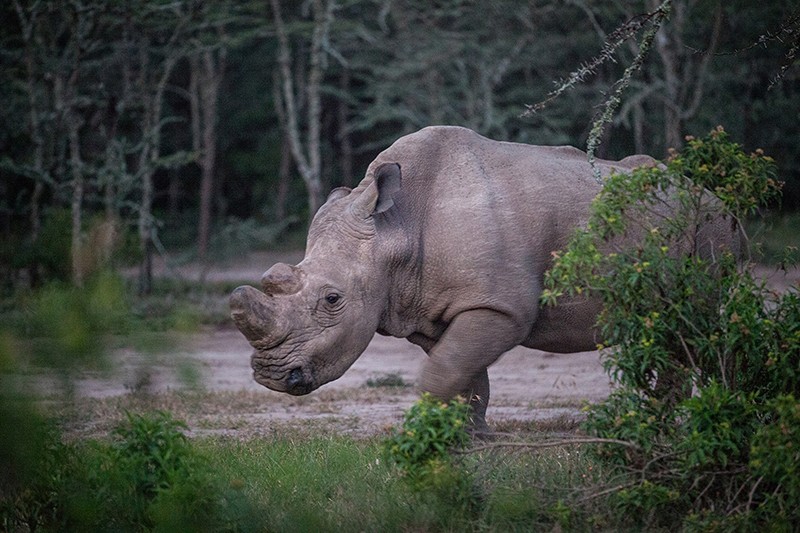
This past Monday, March 19th, the world witnessed the last male northern white rhinoceros (Ceratotherium simum cottoni), named Sudan, die. Not only does March 19th mark the death of Sudan, but may also mark the beginning of the end for the white rhino subspecies. While two female northern white rhinos remain, without a male counterpart the future of white rhinos appears to be closing as the subspecies has no clear way to introduce new members into the population.
The eminent extinction of the northern white rhinoceros, like any other extinction, is a severe blow to the efforts of conservation biologists. However, conservationists are not giving up the fight against extinction with northern white rhinos. Last-ditch efforts by the conservationists involve plans for implementing in vitro fertilization and techniques involving stem-cell research. Conservationists have been working hard of stem-cell research with northern white rhinos since 2016. Even since 2016, the conservationists knew that natural reproduction would not work due to the physical limitations of the remaining three rhinos and have been working on ways to save the subspecies since the beginning of the decade. Sperm and other cells from ten individual rhinos are currently in a frozen storage, and could be what saves the subspecies from extinction.
Conservationists provide a bit of hope for the subspecies, but their time to save the rhinos from extinction is dwindling. Even with cells in frozen storage, the scientists need an egg from one of the two remaining females and fertilize it with the frozen sperm and then implant it into a surrogate southern white rhino. If this in vitro experiment does not work, then the scientists will attempt to resurrect the northern white rhino population through stem-cell experimentation. Similar experiments have proven successful among other species and the conservation scientists believe it to be only a matter of time until they accomplish their goal of helping revive the subspecies of northern white rhinoceros.
Articles referenced:
https://www.nature.com/articles/d41586-018-03266-6
https://www.nature.com/news/stem-cell-plan-aims-to-bring-rhino-back-from-brink-of-extinction-1.19849
Posted by Patrick Munley (2)
This is such a sad time seeing as though this subspecies is no longer going to exist after the females pass. I wonder why they didn't out the male and two females together more recently to make them mate and hope for more white rhinos. Although there are thoughts of retrieving this subspecies it is sad to think about the fact that they will no longer exist naturally on their own.
ReplyDelete-Sarah Aboody (1)
The last remaining male was closely related to the last two females, and the last two females were not physically strong enough to handle mating or pregnancy
DeletePosted by Patrick Munley (2)
I find this article so sad. I would think that with all we have today that it would be possible to keep species alive. It's really wild to me of all the struggles that the rhinos face. I wonder what alternative conservation methods could be used it seems that for these rhinos it does not seem to work out.
ReplyDeleteZane Ruehrwein (3)
I am really excited to keep following this case and see if the conservationists working on this study will bring the northern white rhinos back in a couple years.
DeletePosted by Patrick Munley (2)
It is very sad to see extinction happening right before our eyes. The background extinction rate is roughly 1 to 5 species a year, and in modern times, some say it is roughly 1000 to 10000 times that amount. It is sad to think that these species will never exist again, but it is another part of life. The tragic part is the accelerated rates through human interaction with nature.
ReplyDeleteDerek Simoncelli (3)
That is a really interesting fact, I did not realize the extinction rate was so high!
DeletePosted by Patrick Munley (2)